Tbilisi SPP #11 Field Notes (White)
July 17th, 2025, Dedaena Park, Tbilisi, Georgia
Duration: 2 1/2 hours, 6p to 8:30p from meeting place, warmup, and end.
Players: 6 performers, 2 camera people (1 performer alternated as video person)
Julie Becton Gillum (USA)
Adam Koan (USA)
Yoshika Inotani (JP)
Tayna (RU) (alternating video)
Alina Dolzhenko (RU)
Polina Lapteva (RU)
Gina Rubik (HU) (video documentation)
The SPP (Spontaneous Performance Procession) is a happening where dancers process around a given terrain for a set time and break out into mini body-based performances based on site-specific resonance. For detailed info on the SPP, see here.
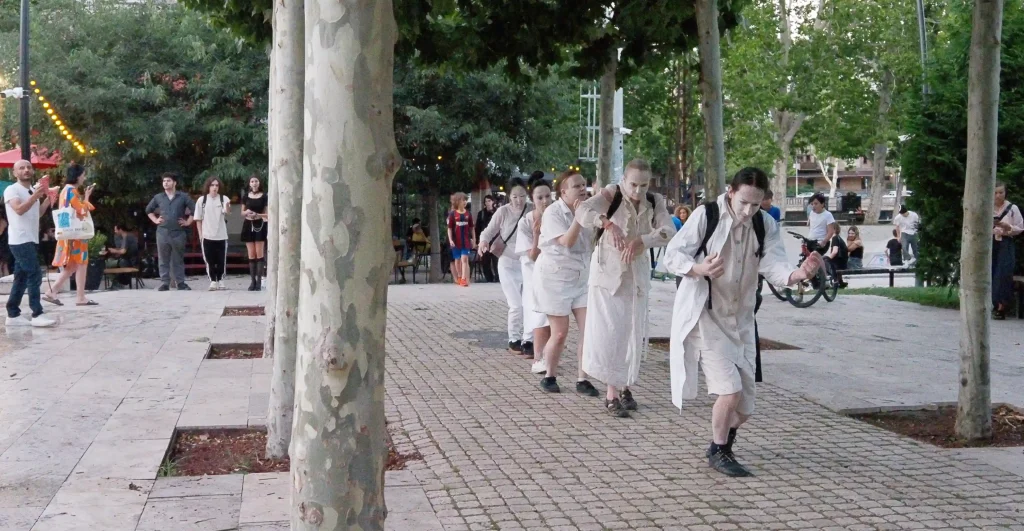
For this 11th SPP, we were honored to be joined by Julie Becton Gillum, a performer, educator, facilitator, and cherished friend from Asheville, North Carolina. She had come to lead a 4-day Butoh intensive titled Radical Resonance. Remarkably, some of us—including Julie—had the energy to participate in this 2-hour parade on the same day as her 3-hour workshop, and three of us continued alongside her through the remaining three days.
Julie led the procession first, and the procession itself took on a distinctly performative quality. Compared to previous SPPS, this one featured more performative movement rather than neutral walking. Both approaches have their value: performative processions work well when the group is very synchronized and natural, while neutral walking in a line provides grounding for the entire piece and serves as a reliable point of return.
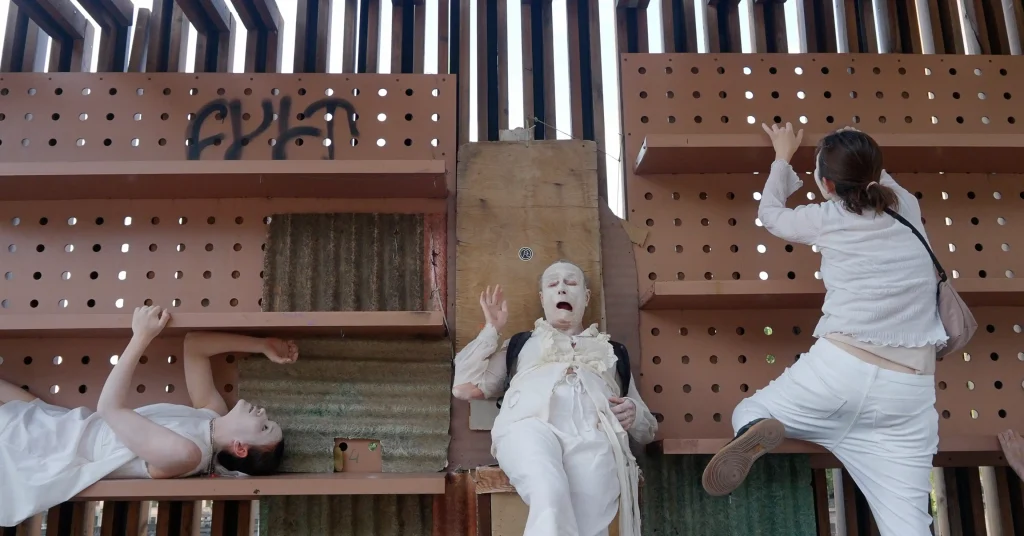
Though we have engaged in 10 of these SPPs in Tbilisi, we never managed to go for a more classical look. That is—all white. This was a first, alongside another—ending the parade by letting jets of water from a fountain drench our bodies just as the children were doing.
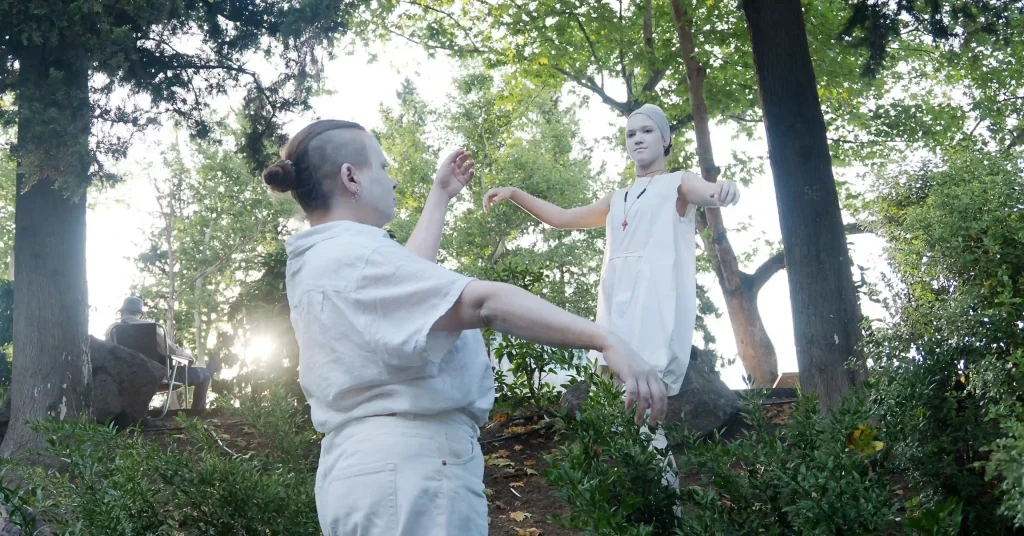
We helped each other put on the white and followed that up with a warm-up. Richard Schechner refers to this as a pre-performance, one that clearly lays the groundwork for the performance that follows. Its ritual dimension is also strongly evident.
In my past working with white body paint, I have used a number of healthy alternatives to any commercial white. This time we concocted an experimental mixture of 2 parts Kaolin clay and 1 part Zinc Oxide.
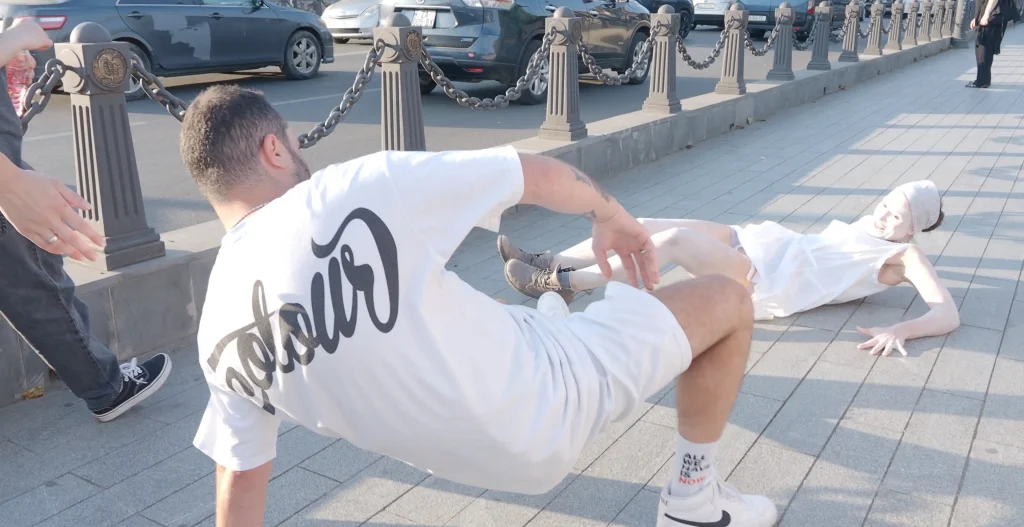
Early in the parade, the route veered away from the park and onto the sidewalk leading across the bridge. Along the way—both on the bridge and just beyond it —we encountered two striking white resonances: a person dressed entirely in white who danced with us for a brief two seconds, and a white dog who trailed us for quite a while.
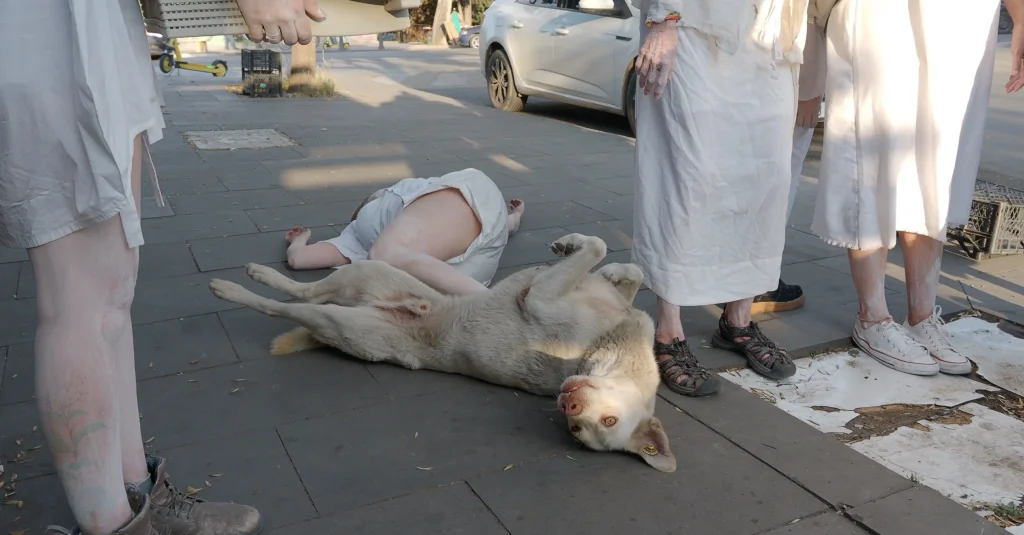
Time Limits
Some of the performances extended well beyond the intended 1 to 3 minutes, stretching up to 15 minutes in one case. This often happens with those new to the SPP, as it’s easy to become absorbed in the moment. It’s helpful to keep in mind Peter Brook’s concept of To Be and Not To Be—the capacity to fully enter the process, yet also to step out of it intentionally when needed. In this context, that stepping out is guided by the constraint of time.
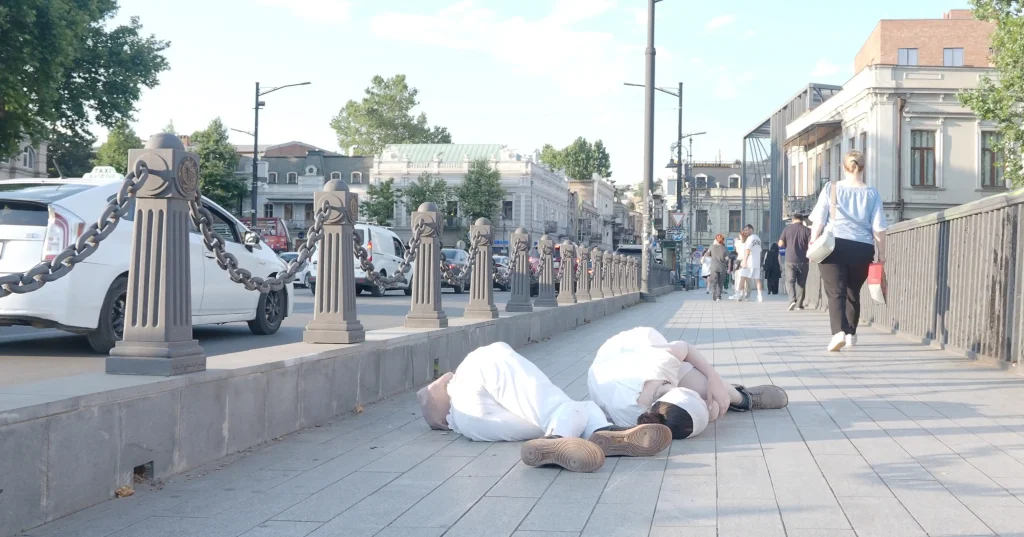
One reason for setting a time limit is to help maintain the energy of the other participants who are watching—so they don’t lose focus or momentum while waiting. At Subbody, for example, performances were encouraged to come with an active form of viewing (such as swaying while watching). However, there’s a real risk of the flow dragging if things go on too long. One possible solution is for the audience to gently signal with a clap around the five-minute mark.
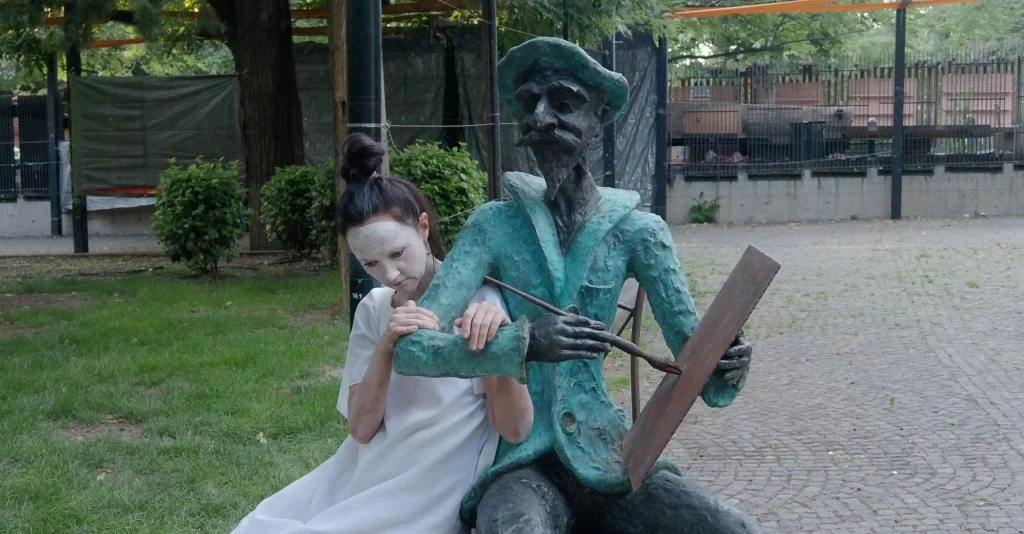
Security
Although security didn’t intervene during the SPP (this time), once it ended, an officer approached Tayna to ask what it was all about. Apparently, a security camera had caught sight of us, and staff were instructed to find out what we were doing.
In today’s world, it’s true—art + fun = sus.
SPP, Repeat, Repeat
Why do we keep doing these SPPs? The short answer: they’re invigorating. Each time we do one, something unexpected happens—that’s part of what at least keeps drawing me in. Since last summer, we’ve done 11 here in Tbilisi (10 of them since March), and still, I keep coming back, always searching for how to take them further.
But the SPPs also serve as a social experiment. I’m deeply curious about how the general public will respond to what we’re doing—and equally fascinated by how we ourselves react in the moment. It all feels like a kind of artistic permission to return to the freedom and wonder of childhood.
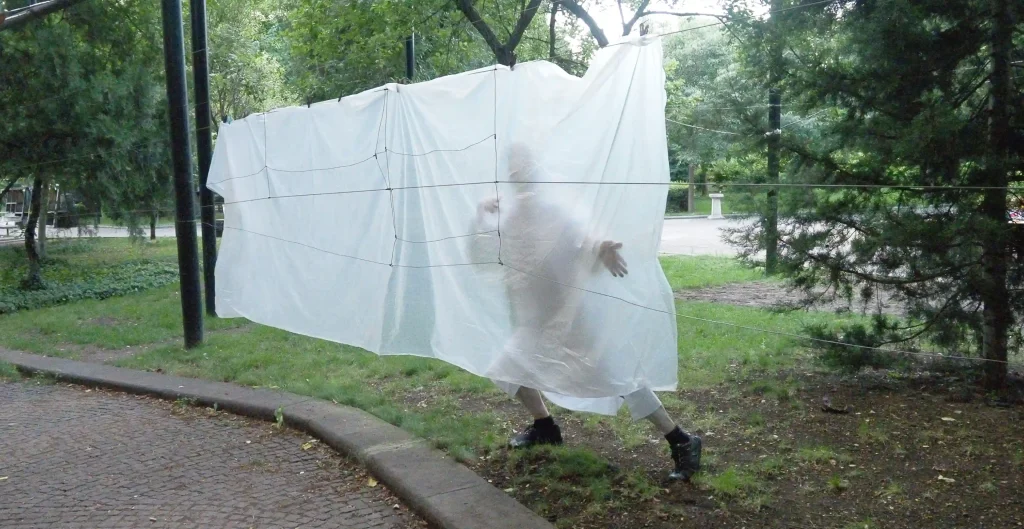
Though no laws are broken, various levels of subversion surface—and I’m drawn to them. They feel like one way of dealing with rigid contemporary life which, to me, so often feels like a machine.
I enjoy feeling alive—just like everyone else—and Butoh brings that out in me. I remember near the end of the parade, when we moved in slow motion along a tree-lined path. As our pace slowed, time and space shifted, and I felt like I was in a three-dimensional cinematography world like in The Matrix. Everything became heightened—the children, the sound of the water, the watching audience. The world felt more vivid, more sensitive, more alive.
Children seem to dwell in that kind of space. Perhaps we’ve forgotten how to access it—so there’s much they can teach us. Early in the procession, we were inspired by kids running freely through jets of water—so we spontaneously chose to end ours the same way. There was something deeply refreshing about stepping into the jets ourselves, in the heat of a Tbilisi summer, as adults.